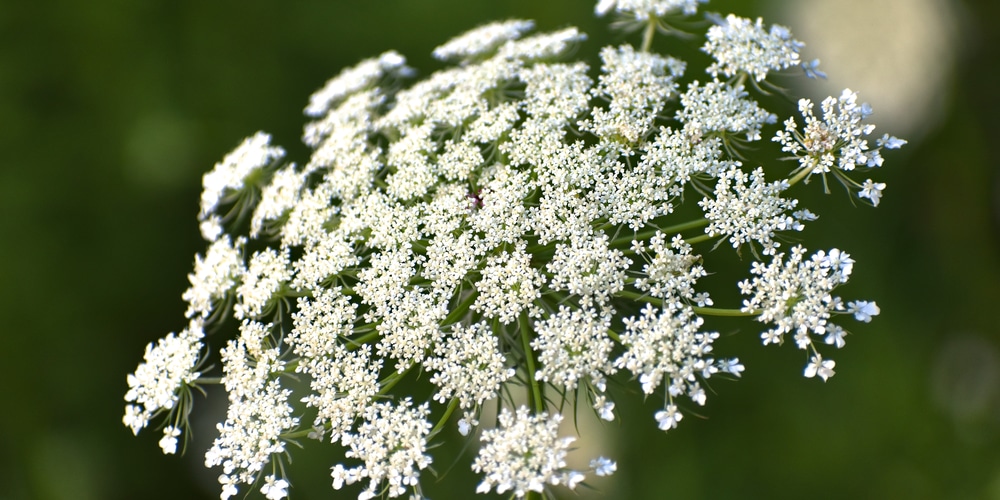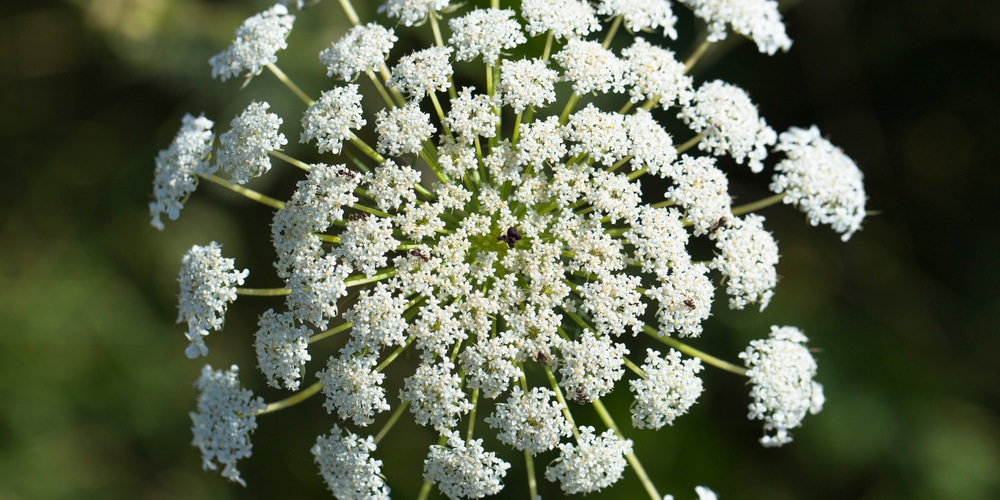Queen Anne’s lace is a wild edible plant. But can you eat its roots? The answer may surprise you.
We’ll look more closely at the nature of Queen Anne’s lace roots, their similarity to carrots, and what precautions you might need to take before considering eating them.
Queen Anne’s Lace Origins
You’ve probably seen Queen Anne’s lace (Daucus carota) along North American roadsides during the summer. However, many people don’t realize it is a wild descendent of the common carrot that originated in Afghanistan. Many people call Queen Anne’s lace wild carrots. But are the roots edible like regular carrots?
The carrot you find in the grocery store has the same species name as Queen Anne’s lace, Daucus carota. However, the domesticated carrot is Daucus carota, sativus. The “sativus” part indicates that it’s a cultivated rather than wild carrot. However, once the cultivated version was allowed to grow wild in North America, it became invasive and took on some changes.
Similarities Between Queen Anne’s Lace and Carrots
Above ground, the carrot and Queen Anne’s lace look much the same. Both have fern-like leaves, and neither grows their lacey, white flowers until their second year. Domesticated carrot tops only grow 0.5-1 foot above the ground. In contrast with Queen Anne’s height of 1-4 feet.
Below ground, wild carrots have long, skinny, and spindly tap roots that are yellow or white. It smells exactly like a carrot when you crush it. However, the wild carrot’s roots are only soft enough to eat when they are young, before the plant flowers.
While it is young, the center of the wild carrot is the best part to consume. However, as it ages, its high xylem tissue content causes it to become too tough and woody to eat. Thus, the best time to gather Queen Anne’s lace roots is in the spring while they are still tender. You can eat them much the same way as a domestic carrot. Wash the wild carrot, peel it, and eat it raw or cooked.
Early cultivated carrots likely started as wild carrots that farmers selected for being plumper and less woody. Domestic carrots don’t have as much woody xylem tissue, making them easier to consume.
Queen Anne’s lace roots never form root masses like many other perennial wildflowers. Like carrots, if left unpicked, they’re biennials that grow again from the taproot during the second year.
Queen Anne’s Lace Roots in Traditional Medicine
Queen Anne’s lace roots have featured in various traditional medicines around the world, including:
- A remedy for threadworms
- A delay in menstruation
- A contraceptive
- A diuretic for urinary stones
Dangerous Queen Anne’s Lace Lookalikes To Avoid
Queen Anne’s lace also has a large number of dangerous lookalikes. Touching some of the lookalikes in an attempt to access their roots can result in rashes, boils, or even blindness. And consuming even a small amount of some of their roots could be deadly. Like any wild plant, if you’re not 100% sure of a plant’s identification, leave it alone.
Some dangerous Queen Anne’s lace lookalikes include:
- Giant hogweed (Heracleum mategazzianum): Touching it can cause blistering rashes and permanent scarring. Meanwhile, getting it in your eyes can cause permanent blindness.
- Poison hemlock (Conium maculatum): Touching can cause allergic reactions, and eating any amount can cause death.
- Spotted water hemlock (Cicuta maculata): Eating it can cause nausea, intestinal pain, vomiting, delirium, convulsions, and often death.
- Cow parsnip (Heracleum maximum): Touching it can cause skin irritation, rashes, and skin discoloration.
- Wild parsnip (Pastinaca sativa): Touching it can cause skin irritation, blistering rashes, and skin discoloration.
Since a wild carrot’s roots aren’t edible by the time they flower, you shouldn’t try pulling up any of these dangerous lookalike plants to access their roots in the first place.
Final Thoughts About Queen Anne’s Lace Roots
Queen Anne’s lace is another name for wild carrots. If you are certain of the identification of a Queen Anne’s lace plant, its roots are edible when the plant is young and before it flowers.
However, if you wait to dig up the wild carrots after they have flowered, the roots will be too woody to consume. You should approach any wild plant with caution, and wild carrots are no different since consumption can have undesirable side effects and lookalikes can even be deadly.

